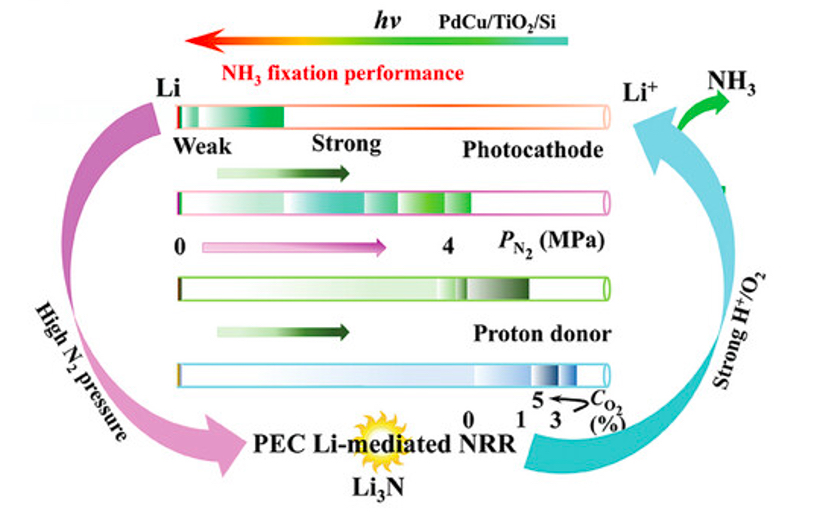PRESS RELEASE: Characterising a cleaner way to produce ammonia
LocationTrieste (Italy)
In a recent study, published in the scientific journal Advanced Materials, a research group that included scientists of the Central European Research Infrastructure Consortium (CERIC) described in detail a novel and sustainable synthesis method for ammonia.
Ammonia (NH3) is a worldwide used chemical, that has a wide range of applications: from agriculture (to produce fertilizers) to the manufacture of plastics, textiles and pesticides, to water supplies purification. However, its production is a highly environmentally unfriendly process: in fact, it is estimated that the commonly used procedure to synthetize this substance is responsible of about 2% of the world’s energy consumption and 1.5% of total global CO2 emissions. Photoelectrochemical nitrogen reduction reaction (PEC NRR) can help to solve this problem, since it is a solar-powered green and sustainable synthesis approach; scientists are then searching for new solutions that can enhance this method (i.e. changing used photocathodes and/or electrolyte).

Moreover, the research group (that included scientists from the Charles University of Prague and from Hunan University) used field emission scanning electron microscopy (FESEM) to reveal the architecture of the Si-based photocathode; moreover, they also performed synchrotron radiation X-ray photoelectron spectroscopy at the Czech partner facility Materials Science Beamline (MSB) at Elettra Sincrotrone Trieste to probe changes in the chemical state and electron structure of the photocathode surface in the dark and under illumination.
Even if further studies are needed to understand the future potential of NRR in NH3 production, for the first time, through comprehensive operando characterization, scientists gained a detailed description of the Li-mediated PEC NRR process using a Si-based photocathode, providing a novel approach for fast, efficient, cost-effective, and ecologically sustainable synthesis of ammonia.
CERIC-ERIC is a research infrastructures consortium founded by the European Commission in 2014. It offers researchers and industry a single point of access to more than 50 techniques and laboratories in eight Central and Eastern European countries for multidisciplinary research at the micro- and nano-level in the fields of advanced materials, biomaterials and nanotechnology.
ORIGINAL ARTICLE:
CONTACTS: CERIC-ERIC Press Office: press@ceric-eric.eu
Marcello Turconi, marcello.turconi@ceric-eric.eu , +39 3388952761



